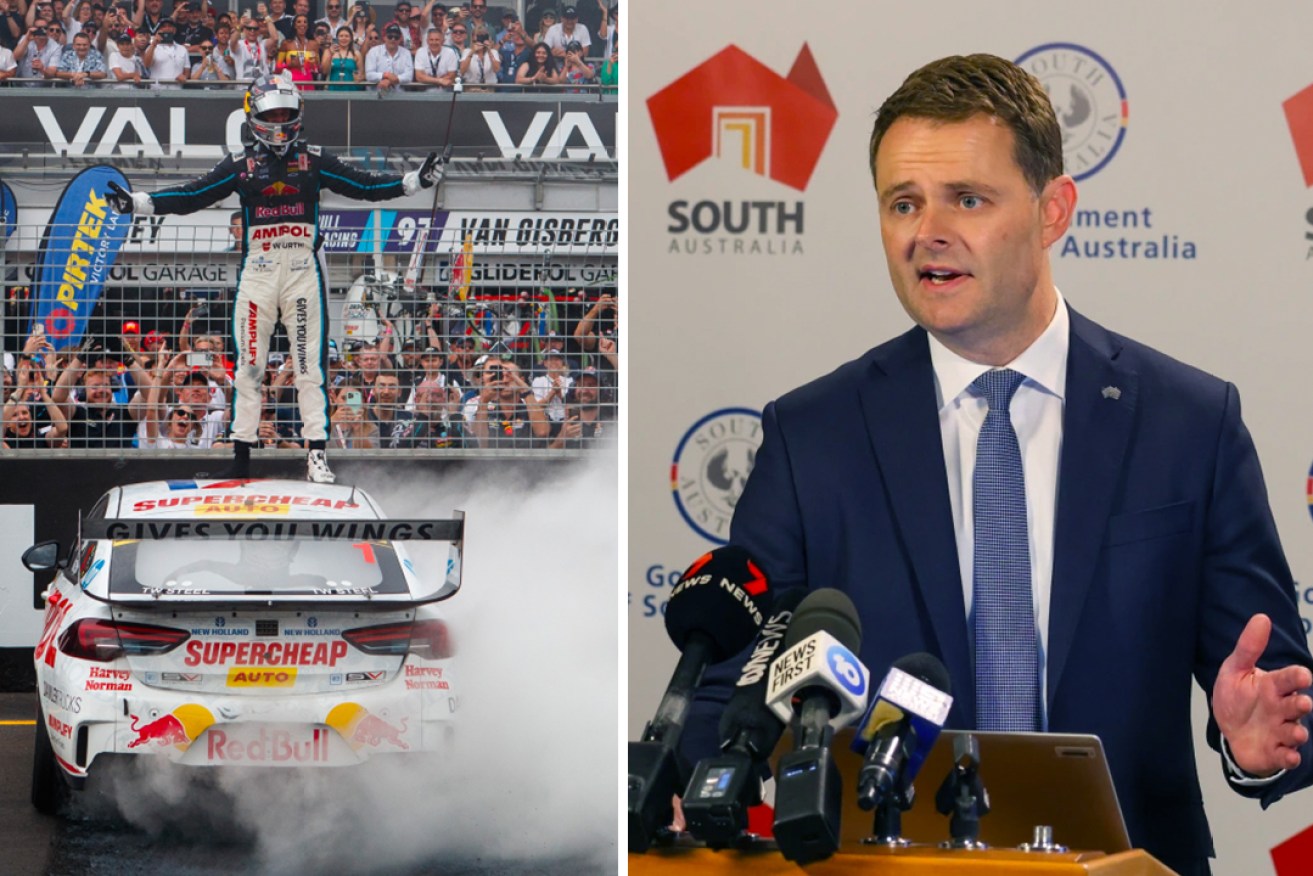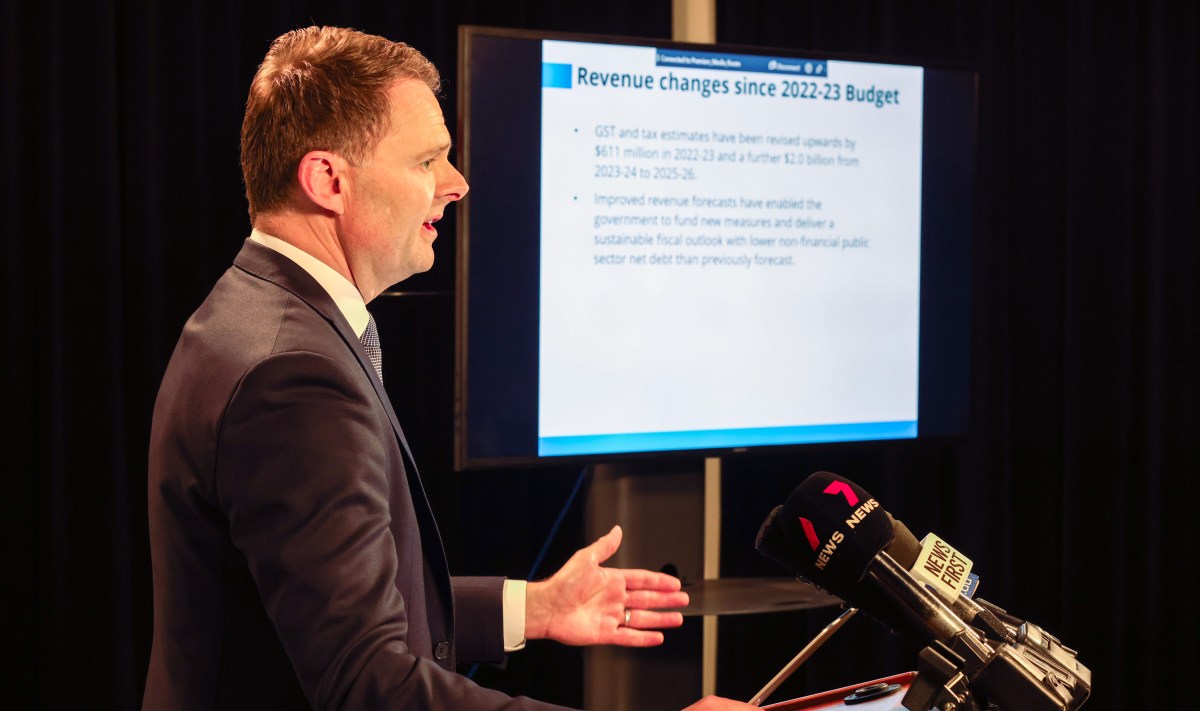Nothing supercheap about revived Adelaide 500
The cost of reviving the Adelaide 500 car race has blown out to just under $35 million – almost $14 million more than what the Malinauskas Government first budgeted, Treasurer Stephen Mullighan has revealed.

Photos: Matt Turner/AAP and Tony Lewis/InDaily.
According to Mid-Year Budget Review (MYBR) papers handed down this morning, the state government spent an additional $13.9 million to return the Adelaide 500 event to Victoria Park last month.
That was on top of the $21 million allocated in the June state budget – $3 million of which was assigned to buy back assets sold off by the former Marshall Government and $18 million of which was allotted to run the event.
Mullighan said the cost blow-out was a “testament to the short-sightedness and vandalism that the Steven Marshall Government undertook when they flogged off the Adelaide 500 assets in an effort to thwart this government’s attempts to bring the race back”.
He said much of the $13.9 million in additional funding was spent on rebuilding and purchasing track infrastructure, including pedestrian overpasses and concrete barriers.
“This brings the total costs for the Adelaide 500… to $34.9 million,” the Treasurer said.
“We think this is a good use of taxpayers funds to make sure that we can continue attracting people to come to South Australia holding these major events.”
Asked how the government underestimated the cost of bringing back the Adelaide 500 by such a significant amount, Mullighan said: “To be fair on the Motorsport Board, they’d been up and running for eight weeks by the time we handed down the state budget”.
He said the board had only eight months to achieve the government’s vision for the Adelaide 500 to be “the best event in Australia”.
“As the results from Supercars Australia has shown it has been the best event of the season,” he said.
“We’ve seen economic benefits of between $40 and $45 million from the event.
“To spend $35 million and to have an economic benefit of well over $40 million just goes to show why it’s important to invest in these things.”
Mullighan said this year’s economic analysis of the Adelaide 500 event would not be available until early next year.
Opposition treasury spokesperson Matt Cowdrey said Premier Peter Malinauskas “knew what was required to stage the Adelaide 500 but he clearly doesn’t have a grasp on economic management if he missed the mark in his budget by nearly $14 million”.
“Labor’s been quick to try and shift the blame, but cost blowouts have become the hallmark of the Malinauskas Government – including an outrageous $5.5 billion hike in the cost to the North-South Corridor project,” he said.
The Mid-Year Budget Review also shows that the government has lifted its expectations for stamp duty returns by $111 million this financial year.
The government in June forecast $1.013 million in stamp duty revenue, but it has since increased that to $1.124 million.
Asked if the government was too pessimistic in June about what would happen to the South Australian housing market, Mullighan said the projections that underpinned the forecasts were predicated on housing values remaining at an elevated level.
“Prior to COVID we would see somewhere in the order of 40,000 to 45,000 housing transactions per year,” he said.
“Last financial year when the housing market was running really hot we had 57,000 housing transactions – so we’re talking an increase in the order of 25 per cent.
“On top of that we’ve had an increase in housing value.
“What’s driving these new forecasts is maintaining those house value levels, but a more gradual return back to trend.”

Treasurer Stephen Mullighan handing down the Mid-Year Budget Review this morning. Photo: Tony Lewis/InDaily
Mullighan said the government was confident it could absorb the high cost of the state’s two major infrastructure projects – the $3.2 billion new Women’s and Children’s Hospital and $15.4 billion Torrens to Darlington motorway project – because of improved revenue and lower debt levels across the four-year forward estimates.
Funding for those two projects falls outside the forward estimates, with Mullighan saying the impact would likely be detailed in future state budgets and following discussions with the federal government.
The MYBR papers show the forecast deficit for this financial year has reduced from $1.7 billion to a deficit of $829 million – an improvement of $904 million.
They forecast a surplus of $206 million – down $26 million from the June budget – with increasing operating surpluses across the forward estimates.
The net debt-to-revenue ratio – a measure used by credit ratings agencies to assess a state budget’s capacity to service the level of debt – is now forecast to be 112.2 per cent by 2024-25 – a reduction of 7.2 percentage points since June.
By the end of this financial year, non-financial public sector net debt is forecast to be $1.8 billion lower than forecast.
Meanwhile, GST revenue estimates have been revised up by $419 million this financial year and by an additional $1.7 billion over the three years to 2025-26.
“This improved revenue has meant that we’ve had large capacity to fund additional spending priorities, improve the budget position and maintain the forecast of services,” Mullighan said.
Funding commitments in the MYBR include:
- $51.6 million over the next two years for a River Murray community financial assistance package
- $103.9 million over four years to commission and operate a 270-bed expansion of Yatala Prison
- $125 million over four years for upgrades on freight routes including the Dukes, Stuart and Augusta Highways
- $43.1 million this financial year on the state’s COVID-19 response, including SA Pathology testing and vaccinations
- $14.1 million over four years to implement the state’s voluntary assisted dying legislation
- $55 million over four years for social, community, home care and disability non-government organisations
- $26.7 million over four years for child protection services
- $52.8 million for tourism and events




